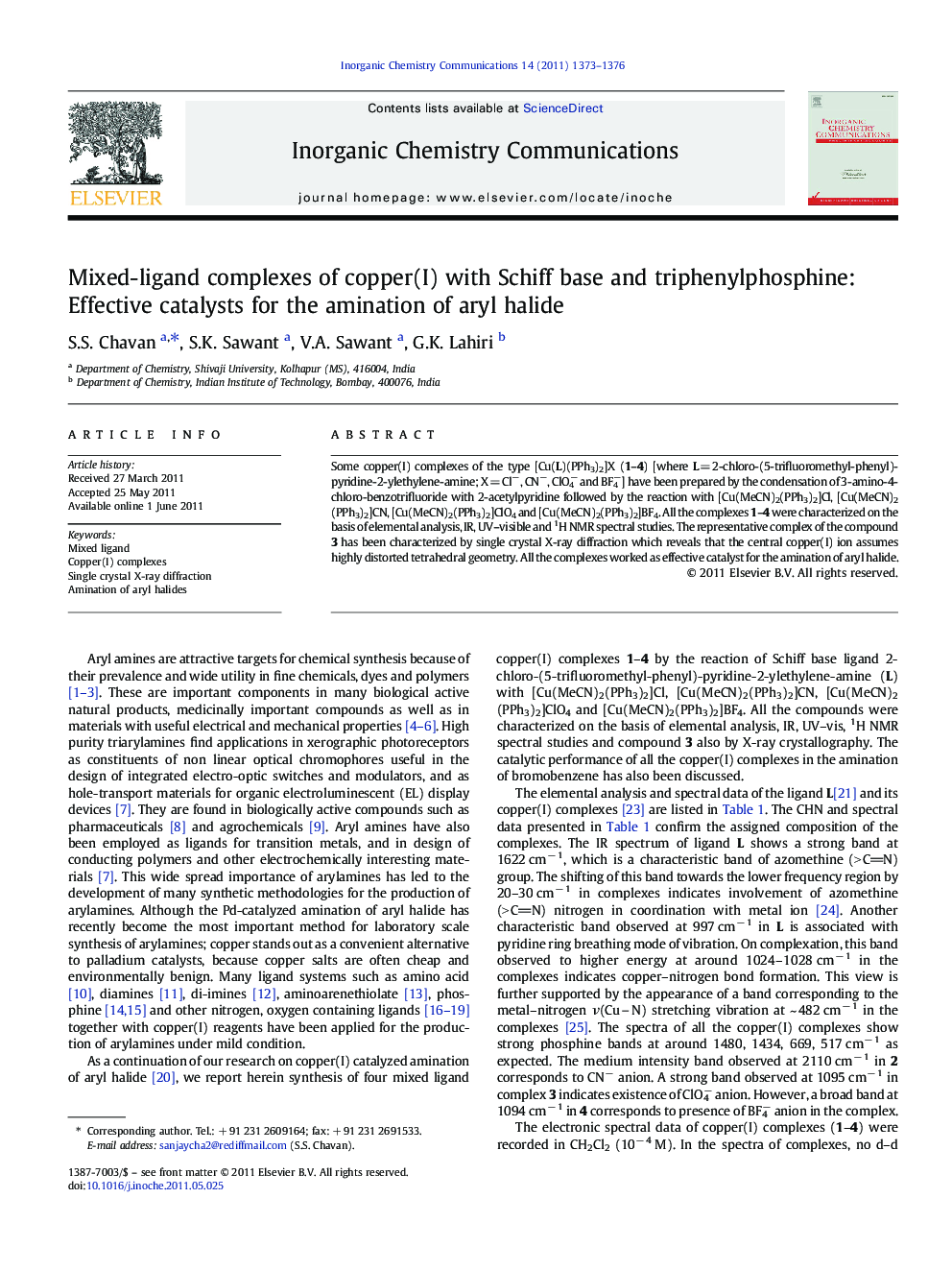| Article ID | Journal | Published Year | Pages | File Type |
|---|---|---|---|---|
| 1302543 | Inorganic Chemistry Communications | 2011 | 4 Pages |
Some copper(I) complexes of the type [Cu(L)(PPh3)2]X (1–4) [where L = 2-chloro-(5-trifluoromethyl-phenyl)-pyridine-2-ylethylene-amine; X = Cl−, CN−, ClO4− and BF4−] have been prepared by the condensation of 3-amino-4-chloro-benzotrifluoride with 2-acetylpyridine followed by the reaction with [Cu(MeCN)2(PPh3)2]Cl, [Cu(MeCN)2(PPh3)2]CN, [Cu(MeCN)2(PPh3)2]ClO4 and [Cu(MeCN)2(PPh3)2]BF4. All the complexes 1–4 were characterized on the basis of elemental analysis, IR, UV–visible and 1H NMR spectral studies. The representative complex of the compound 3 has been characterized by single crystal X-ray diffraction which reveals that the central copper(I) ion assumes highly distorted tetrahedral geometry. All the complexes worked as effective catalyst for the amination of aryl halide.
Graphical abstractA series of copper(I) complexes have been prepared and characterized by elemental analyses, IR, UV–visible and 1H NMR spectroscopy. Single crystal X-ray diffraction study of [Cu(L)(PPh3)2]ClO4 shows highly distorted tetrahedral geometry. All the copper(I) complexes worked as effective catalyst for the amination of aryl halide.Figure optionsDownload full-size imageDownload as PowerPoint slideResearch highlights► Synthesis of mixed ligand copper(I) complexes. ► Characterization by elemental analysis, IR, UV–visible and 1H NMR spectral studies. ► X-ray diffraction of complex 3 reveals that the central copper(I) ion assumes highly distorted tetrahedral geometry. ► All the complexes worked as effective catalyst for the amination of bromobenzene.
